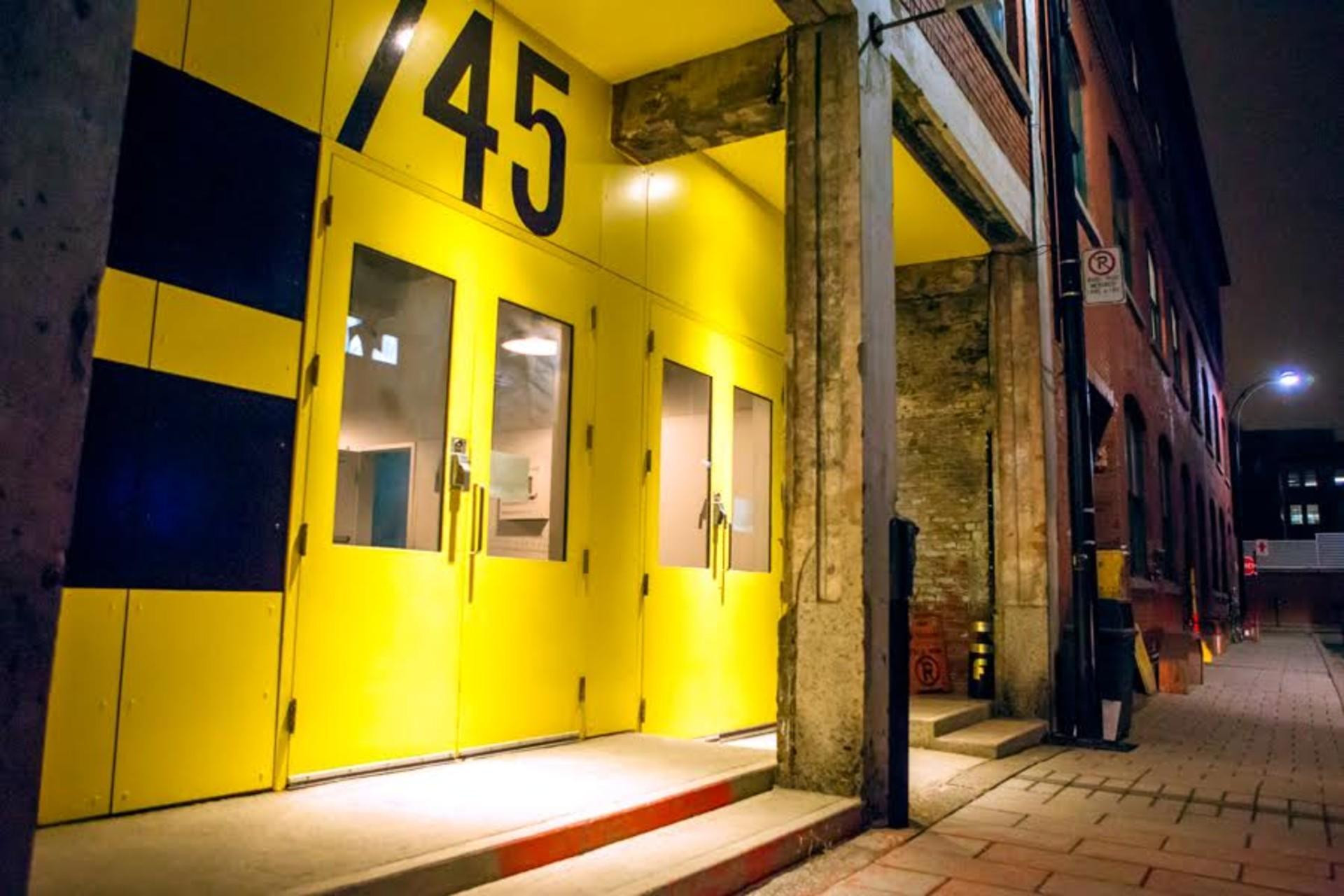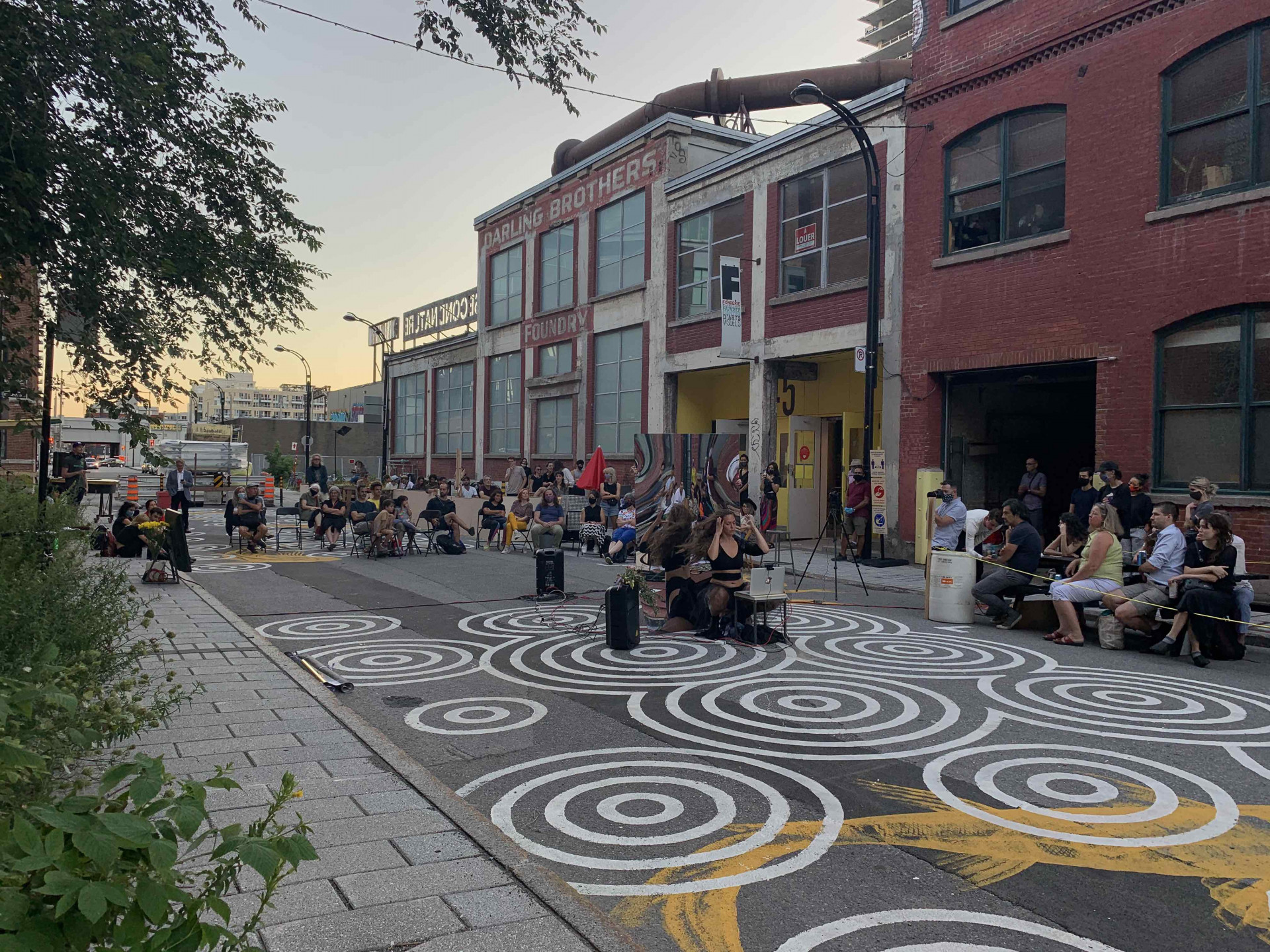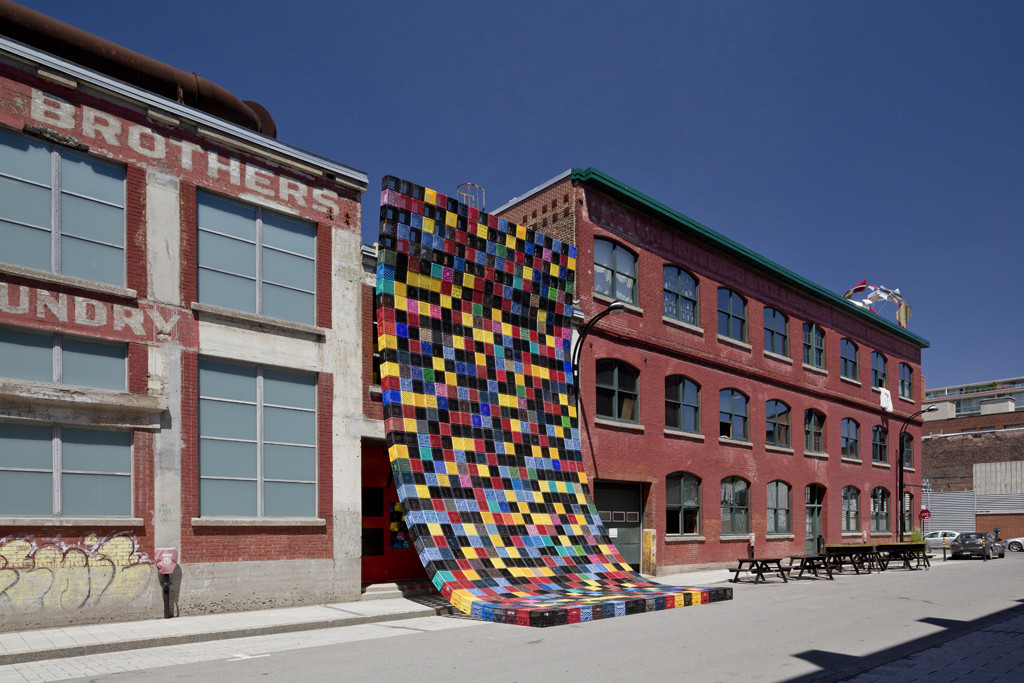Fonderie Darling is a visual-arts venue that was founded and is directed by the not-for-profit art organization Quartier Éphémère, which has the mandate of supporting the creation, production, and dissemination of contemporary art. A small business by nature, Fonderie Darling develops a wide range of tools for the distribution of art to a broader public. Fonderie Darling occupies 3,500 m2 in two adjoined former industrial buildings in Old Montreal. It presents exhibitions, makes studios available to local artists, and hosts international residencies, offering artists and the public fulfilling experiences in an inspiring context and with a sense of coherence that facilitates the comprehension of contemporary art. A unique institution in Montreal, Fonderie Darling has set itself the objective of bringing together the local and international art scenes through its activities.
Quartier Éphémère was founded in 1994 in a former warehouse at 16 Prince Street, made available free of charge by the City of Montréal through S.I.M.P.A. This location encompassed an exhibition space and artists’ studios until 1999. The presence of Quartier Éphémère in a neglected neighbourhood responded to its mandate for revitalization of peripheral urban zones through art activities. The many in situ projects produced – one of which received the Prix Orange, awarded to an organization for the first time, in 2001 – were instrumental in dissemination of art in a neighbourhood that had been indifferent to it and now integrated it into the local culture.
From Quartier Éphémère to Fonderie Darling
As economic redevelopment of this former industrial district was taking hold in the early 2000s, Quartier Éphémère saved from demolition Fonderie Darling , a building that had been a central part of the old Darling Brothers business and was now owned by the City of Montréal. With the city’s assistance, notably by its designation of Fonderie Darling as a heritage building in 2001, and with financial support from the provincial and federal governments and from private partners, Quartier Éphémère raised $4 million for rehabilitation. Reconstruction took place in two phases: in 2002, the public-access building devoted to presenting exhibitions, rented from the city on a long-term lease and for which the architectural firm Atelier in situ was nominated for an award from the Ordre des architectes du Québec in 2003; and in 2006 the building for artists’ studios, renovated and acquired in 2006 by the organization. The functional and technical program for this building was designed by the ecological architects of l’Œuf. The work was supervised by Desnoyer Mercure.
The nature of Fonderie Darling is defined by these two dynamic and stimulating hubs installed in separate but adjoined buildings, complementary and interconnected via a permeable border that allows visitors occasional access.
The Galleries
The architectural revitalization of an industrial building such as Fonderie Darling involves exploration of new forms of exhibition presentation in which the space is an important component. Two galleries were designed to accommodate different approaches: one related to artworks for which the architectural context is essential, and the other for artworks that can be presented more autonomously.
The Studios and Residences
In keeping with its mandate, Fonderie Darling makes low-cost studios available to Montréal artists, one of its priorities being to contribute to the advancement of the visual arts and to make the trade of artist a full-fledged profession. Thanks to its networking program, through which visits are organized for professionals from Quebec and abroad, Fonderie Darling has become an essential destination for contemporary art in Canada.
Because Quartier Éphémère was founded on a cooperation agreement between organizations in two countries (Usines Éphémères in France and the Fondation pour le Développement des Artistes de la Relève), Fonderie Darling is a natural hub for international residencies. The opening of these residencies to curators makes it possible to cast a critical eye on the work of artists on site and, more broadly, on the Montréal art scene. The presence of international professionals is an extremely stimulating part of the organization’s dynamic: it gives artists an opening to the world, and an opportunity to test their ideas and techniques and create durable relations with another country.
La Place publique
In 2005, Fonderie Darling created La Place publique, a summertime public area in front of its buildings, by closing the street to traffic. Every summer, a stage is set up for which all sorts of special events are programmed. The hope is to make La Place Publique permanent; this strategic site for raising the public’s awareness of art hosts temporary artworks and performances that attract neighbourhood residents.
With its many facilities, Fonderie Darling provokes situations of encounter: outdoor installations, discussions around exhibitions with invited guests, occasional performance events, open studios, and educational activities in creative environments within the artists’ working spaces. Seeking intersections and discoveries, frequently partnering with other organizations, Fonderie Darling brings the public for visual arts together around shared concerns.
Since 2002, from its location at the edge of Griffintown, Fonderie Darling has exerted its influence as a leader of the trend to convert buildings from the industrial era for the dissemination of visual art. By offering a unique site and activities designed for various publics, it affirms the role of art and consolidates the presence of artists as an enhancement to residents’ wellbeing and quality of life.



